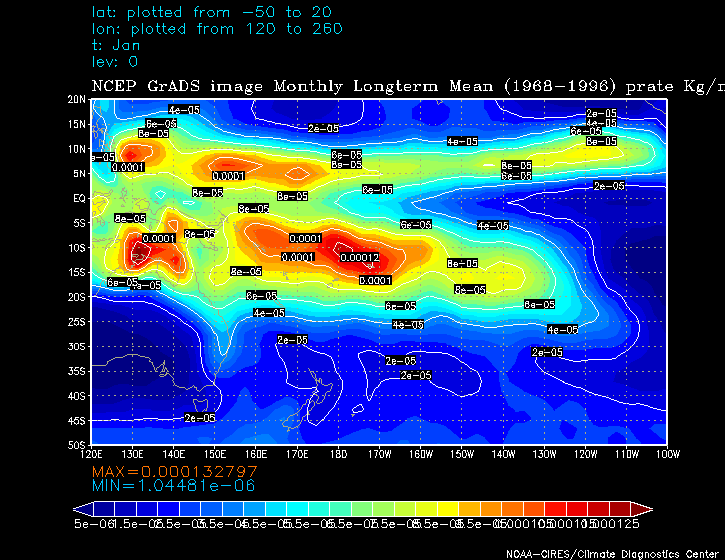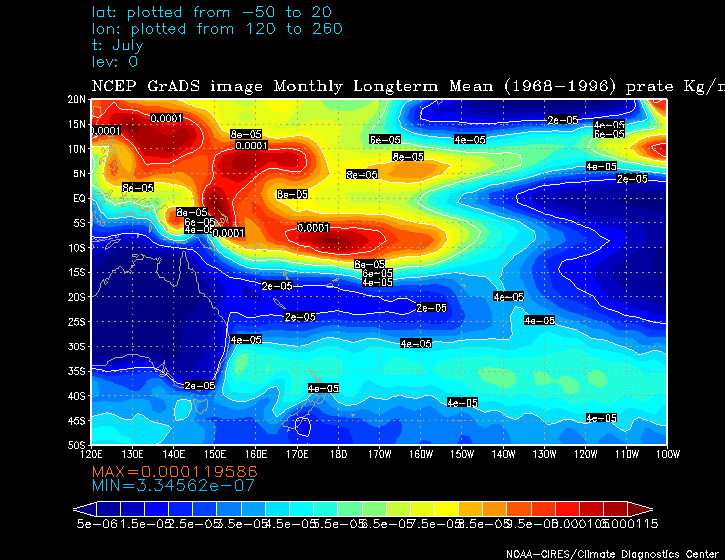
|
E. Linacre and B. Geerts |
12/'98 |
The South Pacific Convergence Zone is the largest and most persistent spur of the ITCZ (Fig 12.1 in the book). It is also the only spur that does not result from heating over land during the summer. The SPCZ is most active in the southern hemisphere summer (Fig 1), but it is present year-round (Fig 2). It is a 200-400 km broad zone stretching from the ITCZ near the Solomon Islands to Fiji, Samoa, Tonga and further Southeast. Easterly Trade winds converge with weaker winds, causing frequent rainfalls. Fiji receives 1,500-2,000 mm/a, most of it in summer.

Fig 1. Mean rainfall rate for January (based on 1968-'96 data) in the South Pacific. The ITCZ can be seen around 5ºN. The SPCZ starts around the Solomon Islands and peters out about 120ºW, 25ºS. The Australian wet season centered around Darwin is evident. Units are kg m-2 s-1; to convert to mm per month, multiply by 260x104.

Fig 2. As Fig 1, but for July. North Australia is now dry, but the SPCZ can still be seen, albeit weaker and further north.
It appears that the SPCZ moved eastward by about 150 km around 1977 (1). This is shown by a shift in the longitude of the sea-level pressure trough and that of the minimum in outgoing longwave radiation. The latter is a measure of thunderstorm activity: the less longwave radiation is emitted into space, the colder the cloud tops are. The shift of the SPCZ caused drier conditions in Fiji, Tonga, Vanuatu and New Caledonia, and wetter conditions in the northern Cook Islands and Tokelau. The latter, for instance, now receives 30% more rain and has 20% more clouds.
Incidentally, 1977 was a turning point in climates in northern America as well as the Pacific, and there was an acceleration of global warming and an increase in the duration and intensity of El Niño events.
Reference
(1) Salinger, J. 1998. South Pacific Regional Environment Programme. (National Institute of Water and Atmospheric Research, New Zealand ).